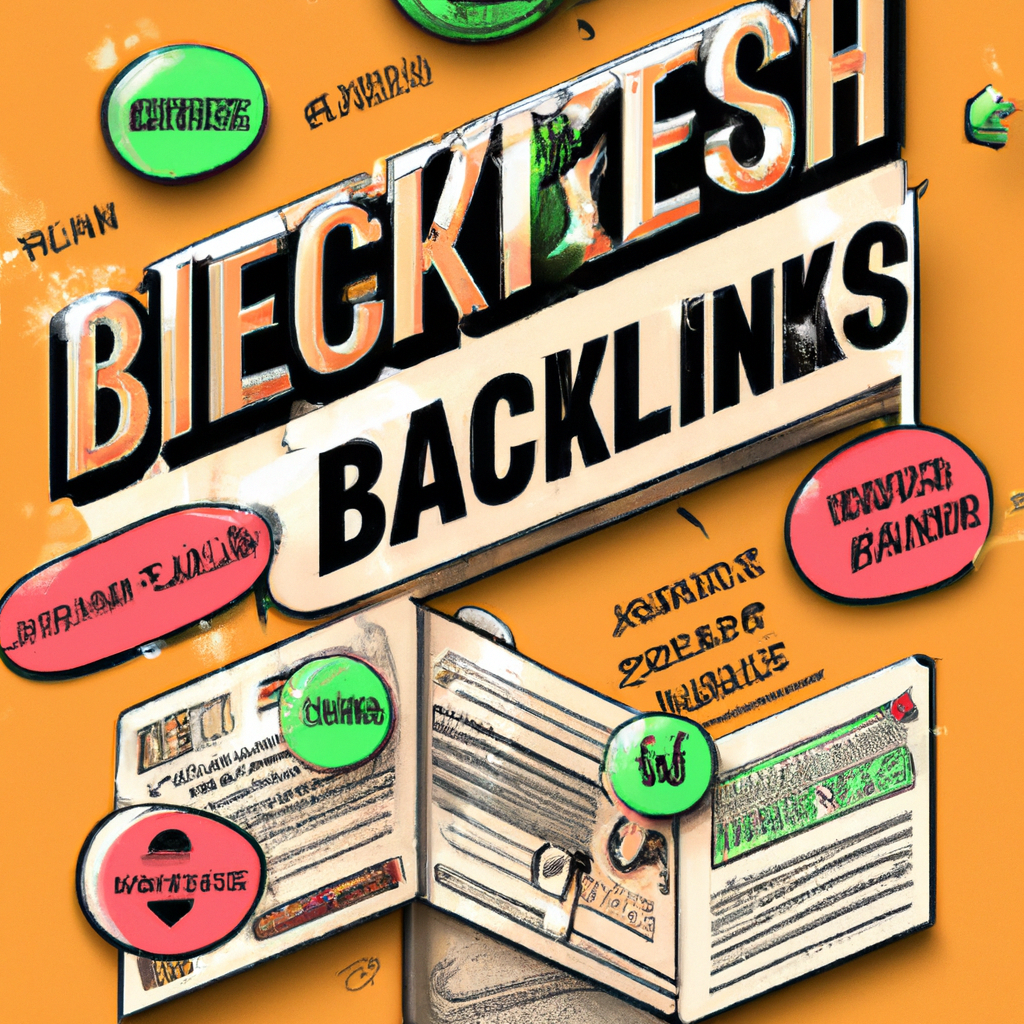SEO Tips
Key Takeaways:
- SEO is essential for businesses to reach their target audience and meet the needs of users by optimizing content for search engines.
- Keyword research is crucial for effective SEO, including finding primary and secondary keywords and utilizing tools like the Keyword Magic Tool for research.
- Writing quality, original content is another important factor in improving SEO rankings, and using techniques like proper keyword placement, subheadings, and internal linking can further improve the quality of content and visibility on search engine results pages.
Why SEO is important for businesses
In today’s digital age, it’s vital for businesses to have a strong online presence, and search engine optimization (SEO) is a crucial aspect of this. This section will discuss why SEO is essential for businesses in two parts:
- Firstly, how meeting the needs of users through optimization can benefit your website, and
- Secondly, the role that search engines play in presenting your content to potential customers.
Meeting the needs of users for optimization
Search engine optimization (SEO) is key to satisfy the wants of users searching for certain products, services or data. Websites must guarantee that their content is well-optimized, useful, pertinent, and search-engine friendly to match users’ needs when searching for solutions online.
To meet users’ needs for optimization, it’s vital to accommodate their preferences as they search the web. Effective SEO techniques can assist websites provide tailored results that match their search queries, thus attracting more visitors to the site, increasing the odds of converting them to paying customers.
Apart from employing primary and secondary keywords, websites can utilize a keyword magic tool to investigate more keywords related to their industry or niche and optimize their content as necessary. Utilizing bullets and subheadings in articles also makes it easier to read and enables readers to scan it quickly.
Mobile optimization of websites is critical as more people now surf the internet on mobile devices. Therefore, businesses need high-quality content that engages with audiences while talking directly to potential customers while using “suggest” keywords for keyword research.
To sum up, meeting users’ needs necessitates creating top-notch useful content that is optimized according to SEO guidelines while accommodating their comfort in searching for answers online by offering well-curated content designed to keep the reader enthralled with applicable data all the time.
The role of search engines in presenting content
Search engines are the bridge to the internet. They use algorithms to scan webpages and show users what they need. Over time, they have evolved with features like voice search and location-based searching.
Search engine optimization (SEO) helps make content visible to users. It involves understanding how search engines work and crafting content that is relevant to user needs. Plus, HTML tags help with visibility in Google’s SERP. To do this, keyword research is essential.
Creating content means keeping users and search engines in mind. Use diverse keywords to satisfy user needs. Tools like “SEMrush” and “Google Trends” can give insights into keyword trends.
Long-tail keywords, plus primary and secondary ones, can optimize pages for specific audience segments. This leads to higher conversion rates, which in turn, benefit profitability.
Keyword research for effective SEO
Keyword research is the backbone of effective SEO and can determine the success or failure of your website’s discoverability. In this section, we explore the importance of primary and secondary keywords in your content. We’ll also uncover how to use the Keyword Magic Tool to optimize your website’s content and discover keywords your competitors might be using. With the right keyword research tactics, your website can climb the ranks of search engine results and ultimately drive more traffic to your site.
Primary and secondary keywords
Keyword research is vital for a successful SEO strategy. This means finding and studying appropriate primary and secondary keywords your audience uses to search for content. Primary keywords are the main focus of a webpage. Secondary keywords support visibility and ranking of the primary keyword. For more information, check out these SEO Tips.
Optimizing a webpage’s content with relevant primary and secondary keywords is essential to gain visibility and rank on search engines. Primary words help search engines to understand what a webpage is about, while secondary words reinforce the content themes and attract more visitors. Professional keyword research is important for successful SEO results.
Using primary and secondary keywords is important, however, overloading webpages with too many keywords (known as keyword stuffing) can attract penalties from search engine algorithms and lower rankings. Therefore, it is necessary to balance keyword density by adding natural language expressions throughout the content, while also not repeating phrases.
Using the Keyword Magic Tool for keyword research
Keyword research is vital for SEO. It helps businesses find the words and terms customers are using to search for their goods and services. The Keyword Magic Tool simplifies this process, reducing manual effort.
It allows users to easily find long-tail keywords related to their business and target audience. Plus, the tool suggests keyword variations, provides search volume, competition level, and trend history data. It also lets you see competitors’ keyword strategies, as well as organize keywords into themes. All this saves time and reduces manual work.
However, the Keyword Magic Tool isn’t the only way to use SEO to boost website traffic. Smart practices such as:
- Using primary and secondary keywords
- Avoiding “pogosticking”
- Using bullet points and subheadings
- Adding “suggest” keywords
- Optimizing for mobile
- Using internal linking
can help too.
Businesses must invest in quality content and technical improvements to stay ahead of competitors online. Keeping up with SEO trends can increase organic visibility and help outperform competitors. These tips are essential for SEO success now and in the future.
Writing quality original content for better SEO
To ensure great search engine optimization (SEO), start with writing high-standard, unique content. This is essential for improving your website’s SEO. Quality content will draw in your target audience and keep them on your site longer. Not only does such content rank well on search engines, but it also encourages other websites to link back.
For successful SEO through content, focus on providing your audience with answers to their questions in an attractive and unique way. The content must be relevant, informative, and backed up with research. Additionally, use relevant keywords in titles and subheadings.
Moreover, make sure your content is easily shared across social media platforms and other sites link back to you. Visuals like photos, graphics, and videos can make your content more captivating. Updating content regularly and creating new content will bring in new visitors and retain current subscribers.
17 important SEO tips that actually work
Boosting your website’s search engine optimization (SEO) is essential for driving traffic to your site and reaching a wider audience. In this section, we’ll cover 17 crucial SEO tips that are known to have a positive impact on website rankings. We’ll delve into topics such as the importance of using keywords in the right places, how pogosticking can affect your rankings, the benefits of using bullets and subheadings, and much more. So, if you want to stay ahead of the curve in the ever-evolving world of SEO, keep reading.
Using keywords in the right places
To get better search engine rankings, optimizing keyword use is key. To do this, research and understand the words and phrases people search. Identify relevant keywords, then strategically use them in titles, meta descriptions, headings and body content. Don’t stuff or overuse keywords as it can harm your rankings. Use relevant keywords naturally and make content that meets audience needs.
Long-tail keywords with multiple words are great for optimization. Also, use variations of primary and secondary keywords in natural language patterns. Suggest or related keywords for research, optimize for mobile, implement internal linking with relevant keywords, and improve page speed can all help SEO performance.
To maintain a good SEO ranking, avoid pogo-sticking. Use keywords wisely, place them correctly, and create valuable content to attract relevant traffic.
Pogosticking and how it impacts rankings
When users click on search results, they expect useful content. But, if they leave a website quickly, that’s called Pogosticking. This hurts site rankings, as it signals the content isn’t helpful or relevant. Reasons for this can include slow loading speed, bad navigation, or hard-to-find info. Search engines use this to improve their algorithms for better user experience.
Website owners must provide quality content that meets users’ needs. Also, optimize design and interface. Additionally, use relevant keywords in headings and subheadings with proper keyword density. Avoid Pogosticking, but not at the cost of low-quality content or unethical practices.
A study by Moz found that dwell time is a key factor in rankings. Sites on the first page of Google SERPs have an average dwell time of 3 minutes 10 seconds, while lower-ranked sites have only 45 seconds. So, website owners must focus on content that keeps users on their site for longer.
In conclusion, Pogosticking hurts website rankings. Website owners must provide quality content and improve user experience to reduce Pogosticking and improve rankings. Create engaging content that keeps users on the website longer to improve search engine results page rankings.
Using bullets and subheadings to improve readability
Bullets and subheadings are essential tools to make webpages easier to read. By breaking the content into chunks, the user experience is improved. This is key for SEO- something optimizers should remember.
To use bullets and subheadings well, make headings that explain the content concisely. Bullet points can be used to show key info or list things. Make subheadings of different sizes and styles to guide readers through longer content. Each subheading should accurately show what is below it. Bold or italics can be used too, where needed.
In addition, bullets and subheadings make content more visually appealing. White space, clear headings, and bullet points break up long blocks of text. This makes it easier to scan pages.
Bullets and subheadings help SEO, but they are not the only thing optimizers should think about. Different visuals, like tables and infographics, also help people to understand content, including people using screen readers.
Finally, effective keyword research and suggestion is the ultimate way to improve SEO.
Using “suggest” keywords for keyword research
For effective SEO, keyword research is very important. “Suggest” keywords can be helpful for improving your search engine ranking. These words are generated by search engines, based on a user’s primary keyword. Incorporating these suggested words into your content makes it more relevant to what users are searching for. So, visibility in search engine results pages is improved.
Start with a primary keyword relevant to your business or website. Get a list of suggested terms using tools like Google AutoSuggest, AnswerThePublic and KeywordTool.io. Analyze the search volume and competition level of each suggested term. Focus on long-tail variations of primary keywords for better targeting of specific search queries. Put these suggested keywords into headings, subheadings and body text. Track and analyze the performance of each targeted keyword over time.
Using “suggest” keywords should not be done at the expense of high-quality original content. Balance this approach with content that is valuable, informative and engaging. This is relevant to your target audience.
Follow these guidelines and consistently implement them on your website or blog. Not just the quantity, but also the quality of organic traffic coming to your site from search engines will improve. So, using “suggest” keywords for keyword research is a great tactic for optimizing your content and improving your search engine ranking.
Optimizing for mobile
As mobile devices soar in popularity, it is vital for businesses to optimize their website for mobile users. This is crucial, as mobile optimization has become an essential ranking factor in search engines. If the website isn’t mobile-friendly, it may not appear high in search engine results, reducing visibility and traffic.
To properly optimize a website, there are a few steps to consider. Responsive design is essential for adapting to different screen sizes. Additionally, images and visual elements should be optimized for faster loading times on smaller screens. Content should be simple and easy to read and navigate on a mobile device.
Speed is also key when optimizing for mobile. Mobile users are typically less patient when it comes to waiting for pages to load. Optimizing images and cutting down on unnecessary plugins or code can enhance page speed.
Pro tip: Utilize Google’s PageSpeed Insights tool to analyze your website’s speed and identify improvements.
Linking like a pro: Boost your SEO success with internal linking!
Using internal linking to improve SEO
For better SEO, internal linking is an advantageous tactic. It helps search engines to understand the structure of the website and offers a better user experience.
To gain maximum advantage, link relevant pages with descriptive anchor texts. Linking from higher-authority pages to lower-authority pages can also help in boosting rankings.
Be cautious when using internal linking to improve SEO. Overdoing it can result in a penalty from search engines.
For successful optimization, include internal linking as part of your SEO strategy. Carefully select relevant pages and make sure they are placed in a way that makes sense to users. This can lead to better traffic and search engine rankings.
Improving page speed
Improving page speed is essential! It impacts website ranking and user engagement. Google’s Core Web Vitals recommends loading pages in less than 2 seconds. Slow-loading pages can damage credibility and cause users to leave.
Many methods can be adopted to enhance page speed. Optimize images, minimize HTTP requests, compress large files, use browser caching, minify CSS/JS codes and reduce plugins/components. GTmetrix and Google PageSpeed Insights can help analyze website speed metrics and identify issues.
Optimizing for faster page speeds can reduce bounce rates by 25%. Site owners should prioritize optimizing their site’s loading speed for better user experience and success.
The basics of SEO and best practices
Organic SEO is a must for any successful online biz. Knowing the basics and best practices of SEO can help increase traffic, business visibility, and sales. To optimize your website and content, use relevant keywords, metadata, and HTML tags.
Keyword research and strategic use of keywords is an important SEO practice. Include them in headers, titles, descriptions, and in body content. But don’t just stuff keywords; they must be used in a natural way.
Building high-quality backlinks from relevant sites to yours is also essential for SEO. This helps build credibility and authority, boosting search engine rankings. Ensure that the sites linking to yours are reliable and relevant; otherwise, they could do more harm than good.
Other SEO best practices include having a mobile-friendly site, optimizing loading speed, and using social media to promote content and build online visibility. Follow these practices and stay updated with trends and algorithm updates to rank higher in search engine results and get more traffic.
Importance of SEO for online success
Having a website is not enough to succeed online. In today’s world of digital marketing, SEO plays a vital role in helping businesses reach their target audience. In this section, we’ll explore the importance of SEO for online success and the benefits it can provide. We’ll delve into different sub-sections of this topic, including:
- The use of qualitative content principles and technical improvements
- The allocation of a marketing budget for SEO
- The expected impact of SEO in 2021 – all backed by source names from the Reference Data.
Using qualitative content principles and technical improvements
For effective SEO, website quality must be improved with qualitative content principles and technical changes. To create unique, relevant, and engaging content businesses must understand their users’ intent and target keywords that match their queries. On-page features like meta descriptions, headlines, and other elements should also be optimized to enhance user experience and increase click-through rates. Technical improvements such as mobile optimization, secure HTTPS protocols, tags, site speed, and structured data are also critical for better search visibility.
Staying up-to-date with current trends and dedicating sufficient resources to regular website optimization is essential for long-term success. This means businesses must pay attention to both qualitative content principles and technical aspects to stay ahead in a competitive market.
In summary, using qualitative content principles and technical improvements are vital for businesses to achieve effective SEO and improve website quality that aligns with their audience’s needs.
Allocated marketing budget for SEO
Allocating a budget for SEO is a must for businesses that want to optimize their online presence. This increases visibility in search results and attracts potential customers.
When it comes to funds for SEO, take many factors into account. Keyword research and content quality are key components. Therefore, budget for these. Additionally, technical improvements and link-building help improve search engine rankings.
Remember, SEO is a continuous process. So, set a budget that allows regular updates and website enhancements.
Pro Tip: Track ROI when budgeting for SEO. This helps determine which tactics are successful and adjust the strategy for best results.
Expected impact of SEO in 2021
Search Engine Optimization (SEO) is a must for businesses that want to succeed online. In 2021, SEO’s impact will keep rising because of more competition and customer needs. There are millions of websites. So, optimizing content is key to make sure it comes up at or near the top of search results pages.
Using quality content guidelines and technical updates can help a company’s online presence, upping reach and income. It’s important to assign a big part of marketing budgets to SEO to stay ahead. Search engines, like Google, regularly change algorithms. That means companies must always update to better their rankings.
Keyword research, strategy execution, and high-quality content creation are vital parts of a successful SEO plan. Technical elements like meta-data optimization, internal or backlinks, page speed optimization, and mobile optimization can also be used to boost online presence. Trends, like video marketing and voice search optimization, can help businesses grow.
Businesses should use short-tail and long-tail keywords. They have different intents and accuracies, creating a thorough semantic SEO approach for success. In summary, 2021 will see more SEO impact, making it key for businesses to do well online.
Components of an effective SEO strategy
Crafting an effective SEO strategy is vital for websites to rank higher on search engines and be discovered by potential visitors. In this section, we will uncover the components that contribute to a successful SEO strategy. We will explore keywords, meta data, link-building, technical components, and eight specific tactics based on SEO trends. With the help of these, businesses can succeed in attracting more traffic and growing their online presence.
Keywords
Businesses must do thorough keyword research to identify relevant terms and phrases used by their target audience. These “keywords” create the foundation for optimised content.
Primary keywords define the webpage content. Secondary keywords offer context and variations. Tools like the Keyword Magic Tool help businesses find high-value, low-competition keywords.
Businesses should use bullets, subheadings, and optimize for mobile. Internal linking creates a network of interconnected pages.
SEO requires a range of components. But creating quality content with relevant keywords is essential. Poor rankings on SERPs can hinder success. Allocating resources to SEO efforts is necessary for staying current.
Meta data
Meta data is key for enhancing a website’s SEO visibility. Meta descriptions are a short summary that appear under the title tag of the SERP. They give an understanding of what the webpage contains, helping people choose whether to go to it. Optimizing the meta description is very important and it should be no more than 160 characters, written in plain language.
Headers also play a major role in organizing content on your webpage for both users and search engines. They are signs for search engines about the page’s content. Businesses can increase their SEO and show up more on SERPs by including targeted keywords in header tags.
To make the most of your meta data, you must optimize all aspects with pertinent keywords. This method will help boost your presence on SERPs and bring more visitors to your website. Don’t ignore the importance of optimizing your webpage’s meta data; it’s like building a bridge to your website, and if it’s constructed correctly, they will come.
Link-building
For link-building, quality of links should always be first. Make sure the links are related to your website content. Get different types of links like backlinks, internal links, and social media links. Avoid buying links or any spammy schemes that can damage SEO efforts.
Focus on more than just link-building. Think about content quality, mobile optimization, and other technical components. Analyze your competitor’s backlinks for chances. Build relationships with influencers and bloggers too. Moz says high-quality external links pointing to your website pages are one of Google’s top three ranking factors. Understand technical components of SEO to enhance search engine rankings.
Technical components
For an effective SEO strategy, you must think about all the factors that affect search engine optimization. One of these is the technical parts of your website. These include site structure, HTML structure, URL structure, mobile-friendliness and schema markup. All these elements are important for making sure your website is search engine friendly and ranks well.
Site architecture is a key technical component. This covers how your website is structured, like pages, menus, headers, footers and more. Make sure your site architecture is tidy, so search engines can understand and index your website easily.
HTML structure is also essential. Search engines need well-structured HTML code to understand your content. Use headings (H1-H6) correctly and add alt tags and title tags for images.
URL structure is important too. Make it easy for users and search engines to find your content by organizing it into a clear hierarchy.
Mobile-friendliness is increasingly important. Websites not optimized for mobiles may be penalized by search engines. Make sure your website works on mobiles.
Schema markup is another key component. It helps search engines to understand your content better by providing extra information about products, reviews, events and more.
By considering these technical elements when optimizing your website, you can get more organic traffic from SERPs.
Eight specific tactics based on SEO trends
Search engine optimization (SEO) trends are always changing, and it can be difficult for businesses to keep up. But, by using eight tactics based on current SEO trends, website rankings and organic traffic can increase.
Optimizing Google My Business listings and citation building is a great idea for local SEO. Structuring content to answer common search queries and using featured snippets can also help. Video content on websites can improve user experience and SEO.
Influencer marketing is popular. Businesses may partner with social media influencers to feature their products or services. However, each industry and market have unique requirements so not all tactics work for every business.
For maximum impact, it’s important to monitor and analyze website metrics such as page views, bounce rate, and conversion rates. This way, businesses can stay ahead of the ever-changing SEO landscape, get more organic traffic to their website, and drive sales.
Importance of content and keyword variety for SEO success
SEO success requires the right balance of content and keywords. Too much of one can lead to penalties and lower rankings. Quality content is essential for organic traffic and website visibility.
Create content that is both informative and engaging for the target audience. Optimize it for search engines, but avoid keyword stuffing. Synonyms and related terms can help rank higher, while maintaining a natural language flow.
Long-tail keywords are useful for SEO success. They are more specific and have less competition. Focusing content around long-tail keywords can improve visibility and drive high-quality traffic.
To sum up, a balance between content and keywords is necessary for SEO success. Invest in quality content that uses the right keywords, long-tail keywords, synonyms, and related terms. This can drive organic traffic and increase website visibility on search engines.
Five Facts About SEO Tips:
- ✅ 75% of internet users don’t look past the first page of search results. (Source: Team Research)
- ✅ Keyword research is the foundation of any good SEO strategy. (Source: Team Research)
- ✅ The primary keyword should be the main focus of content and secondary keywords supporting subtopics. (Source: Team Research)
- ✅ Using keywords in the right places, such as the title tag and URL, is important for SEO success. (Source: Backlinko)
- ✅ SEO involves making small modifications to certain parts of your site to improve user experience and search performance. (Source: Google)
FAQs about Seo Tips
What is SEO and why is it important?
SEO (search engine optimization) is the practice of improving the quality and quantity of website traffic through organic search engine results. It is important because it determines how easily customers can find your website. By optimizing your site for search engines, you can increase your online visibility and attract more potential customers.
What is “humans first search” and how does it affect SEO?
“Humans first search” is a concept that prioritizes the user experience over search engine rankings. It involves creating quality original content that is comprehensive and evergreen, using bullets and subheadings to make content easier to read, and making small modifications to certain parts of your site to improve user experience. This not only improves the user experience, but it also helps search engines interpret and present your content in a way that is more user-friendly.
What is a site audit and how can it improve SEO?
A site audit is a comprehensive analysis of your website’s performance and SEO health. It can help identify technical issues, zombie pages, and other areas for improvement. By addressing these issues, you can improve your site’s user experience and search performance, ultimately increasing your online traffic and rankings.
What are primary and secondary keywords and how do they impact SEO?
Primary and secondary keywords are specific words or phrases that are used to optimize the content on your website for search engines. The primary keyword is the main focus of the content, while the secondary keywords support subtopics. By identifying and using these keywords in the page title, meta description, URL, and first 100 words of content, you can improve your visibility on search results pages.
What are featured snippets and how can they be targeted?
Featured snippets are attention-grabbing results that appear at the top of search engine results pages. They can be targeted by identifying high-traffic topics and creating concise and informative content that answers common questions. By incorporating the right keywords and providing the most relevant and valuable information in a clear and concise manner, you can increase your chances of appearing in featured snippets.
What should be included in a guest post to improve SEO?
A guest post should include high-quality and relevant content that is tailored to the target audience. It should also include backlinks to your website to increase online traffic and improve search engine rankings. By publishing guest posts on reputable websites in your shoulder niches, you can increase your online visibility and establish yourself as an expert in your field.







